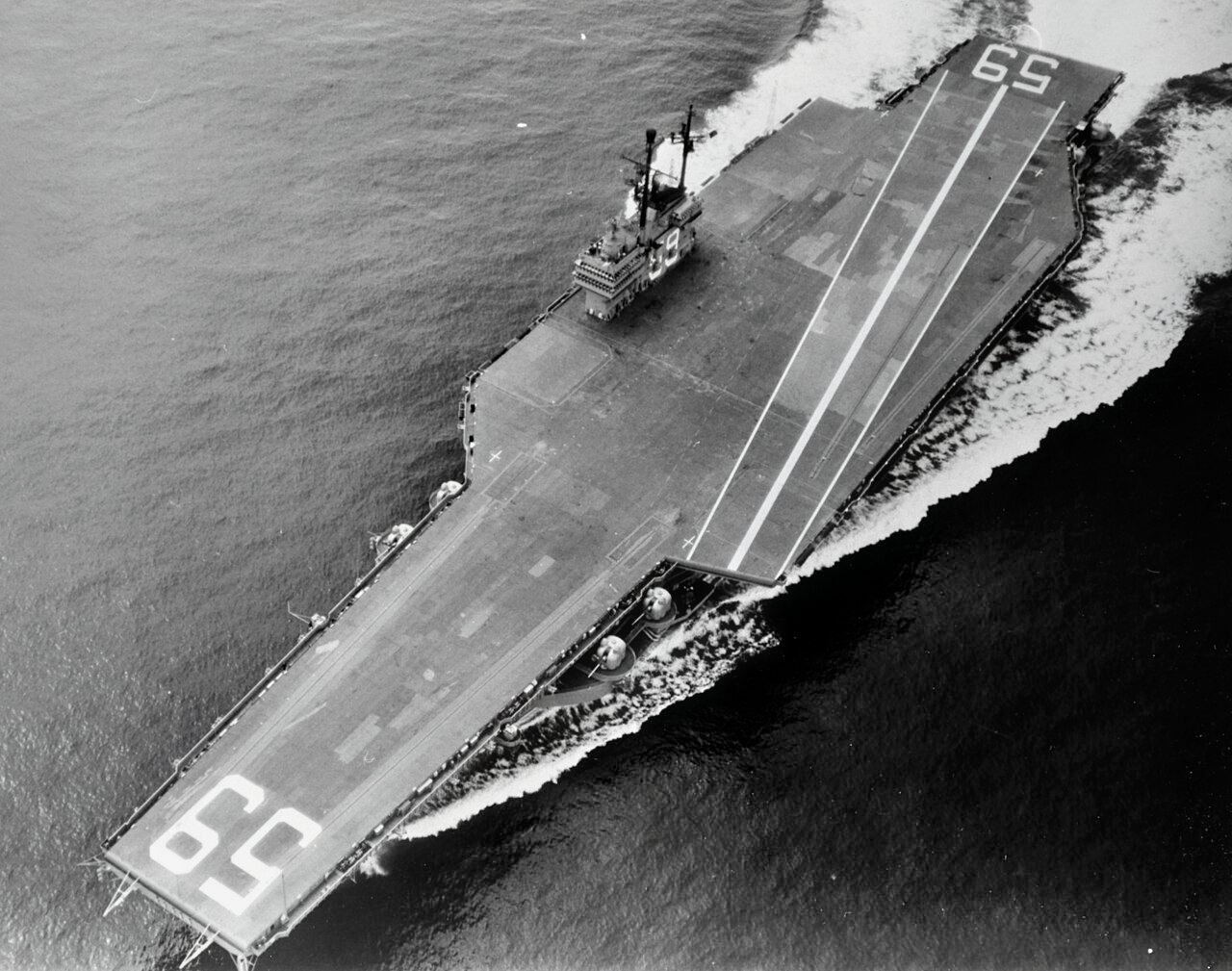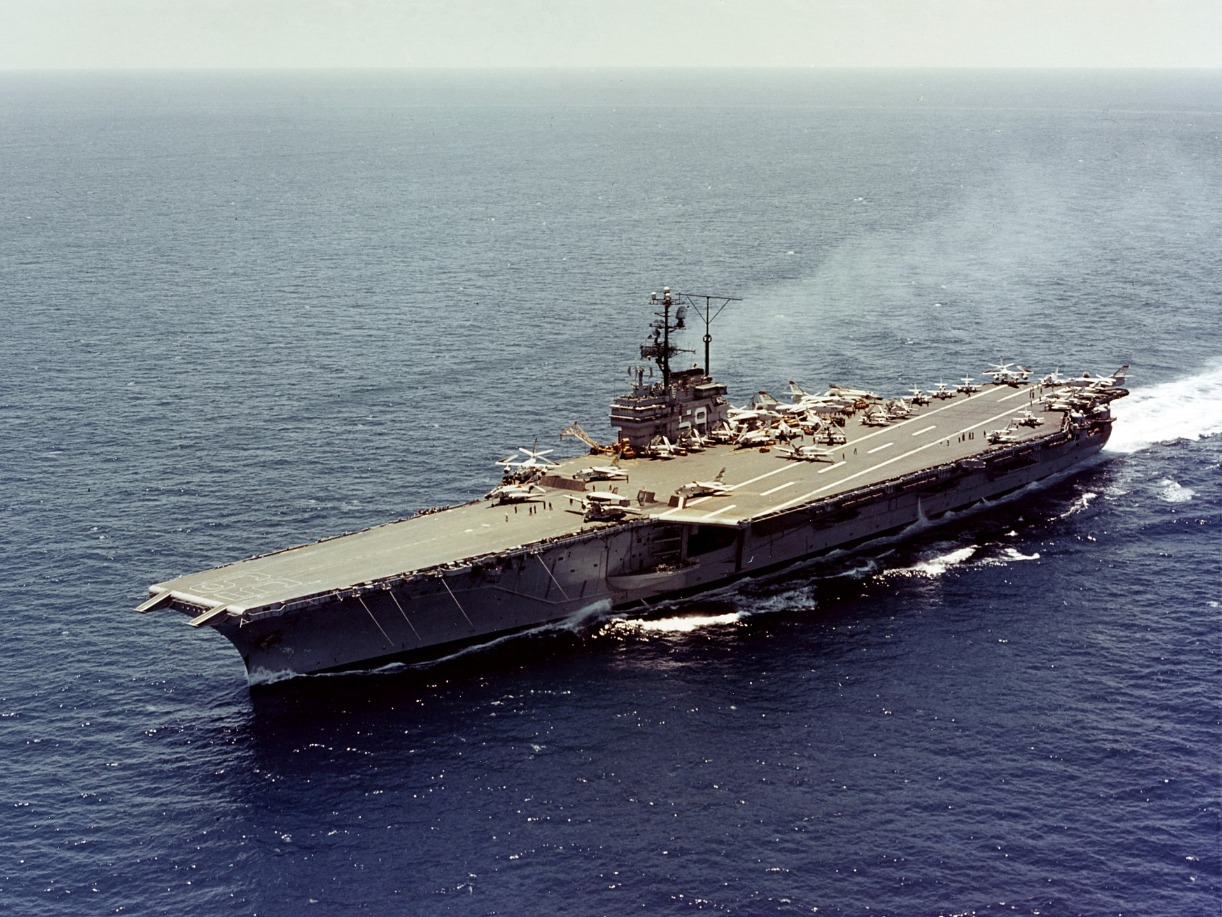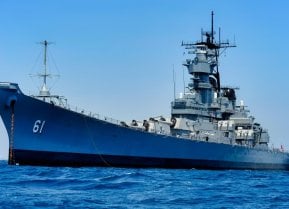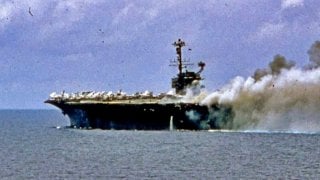USS Forrestal: Accidental Rocket Launch Nearly Destroyed a Navy Aircraft Carrier
The 1967 fire aboard the nation’s first supercarrier USS Forrestal (CVA-59) resonates through history. It set the stage for future damage-control operations throughout the U.S. Navy. The incident destroyed 21 aircraft, injured 161, and killed 134 sailors.
The 1967 fire aboard the nation’s first supercarrier USS Forrestal (CVA-59) resonates through history. It set the stage for future damage-control operations throughout the U.S. Navy. The incident destroyed 21 aircraft, injured 161, and killed 134 sailors.
The USS Forrestal was the first post-World War II carrier designed to handle jet aircraft and entered into service in 1955 and served until 1993.
It carried a crew of 5,400 men and was on its first combat deployment at the time of the fire. It had arrived at Yankee Station off the coast of Vietnam when disaster struck on July 29, 1967.
Twenty-seven of its aircraft were conducting preflight checks with their crews while preparing to take off to strike North Vietnamese targets. A Zuni rocket on an F-4 accidentally discharged, striking an A-4 Skyhawk without detonating. The impact caused the A-4, piloted by the future Sen. John S. McCain III, to leak fuel.
USS Forrestal Aircraft Carrier: Burning Fuel Ignites 1,000 lb. Bombs
The fuel ignited, leading to one or two Korean war-vintage 1,000-lb. AN-M65A1 bombs falling onto the deck.
“According to the investigation report, the old bombs, which caused so much death and destruction, were manufactured in 1953, filled with Composition B explosive, and had been stored “for years” on Okinawa or Guam. Unlike modern explosives, “Comp B” became unstable with age, especially in hot, humid storage conditions. At the least, these weapons were 14 years old and had been stored in the open in the hot, humid climate of the islands,” journalist J.A. Caella wrote in the August 2022 edition of Naval History magazine.
Heavy winds whipped across the flight deck spreading the flames. A 1,000-lb. bomb detonated about 90 seconds into the fire with 40,000 gallons of volatile jet fuel spilling from tanks and fuel cells that were torn apart by blasts and shrapnel. At least seven of the 1,000-lb. bombs detonated when all was said and done.
“Seven holes were ripped through the deck from explosions of 750 lb., 500 lb., and 1000 lb. bombs. Rockets and 20mm shells shot across the deck, and ejection seats fired into the air,” the “Informal Board of Investigation” report on the Forrestal incident said.
Burning fuel spread to the hangar deck and then throughout the interior of the ship.
The ship sounded the crew to General Quarters or their battle stations. The damage control crew shut all of the ship’s interior hatches to prevent the spread of fire, smoke, and water from firefighting equipment.
The incident caused $72 million in damage at the time, roughly equal to $658.9 million in 2023 dollars. It took nearly two years of repairs to put the Forrestal back into action.

It took 24 hours to put the fires out on the Forrestal with support from other ships in her battlegroup.
Damage Control Lessons
An official review of the incident found that the damage control procedures in place at the time of the accident were uncoordinated.
“Some of the burning fuel was spread by untrained hose teams using water on a fuel (Class B) fire, in some cases washing away foam laid by other teams and reigniting the fire. The death and incapacitation of the entire specialized fire-fighting team in the initial explosion had critical impact,” a 2017 report by the Naval History and Heritage Command said. “By the end of World War II, as a result of lessons learned during the war, most Sailors on ships had received training in fighting shipboard fires. By 1967, the U.S. Navy had reverted to the Japanese model at Midway with specialized, highly trained damage-control and fire-fighting teams, but most of the crew was not trained.”

The report continued, “Doing so probably saved some money, but the result in crisis was heroic, but uncoordinated, often ineffective and counter-productive efforts by untrained teams that resulted in needless additional deaths and injuries.”
The Forrestal incident led to an overhaul of the Navy’s damage control procedures and a re-examination of ship design.
About the Author: John Rossomando
John Rossomando is a defense and counterterrorism analyst and served as Senior Analyst for Counterterrorism at The Investigative Project on Terrorism for eight years. His work has been featured in numerous publications such as The American Thinker, The National Interest, National Review Online, Daily Wire, Red Alert Politics, CNSNews.com, The Daily Caller, Human Events, Newsmax, The American Spectator, TownHall.com, and Crisis Magazine. He also served as senior managing editor of The Bulletin, a 100,000-circulation daily newspaper in Philadelphia, and received the Pennsylvania Associated Press Managing Editors first-place award for his reporting.
All images are Creative Commons.


